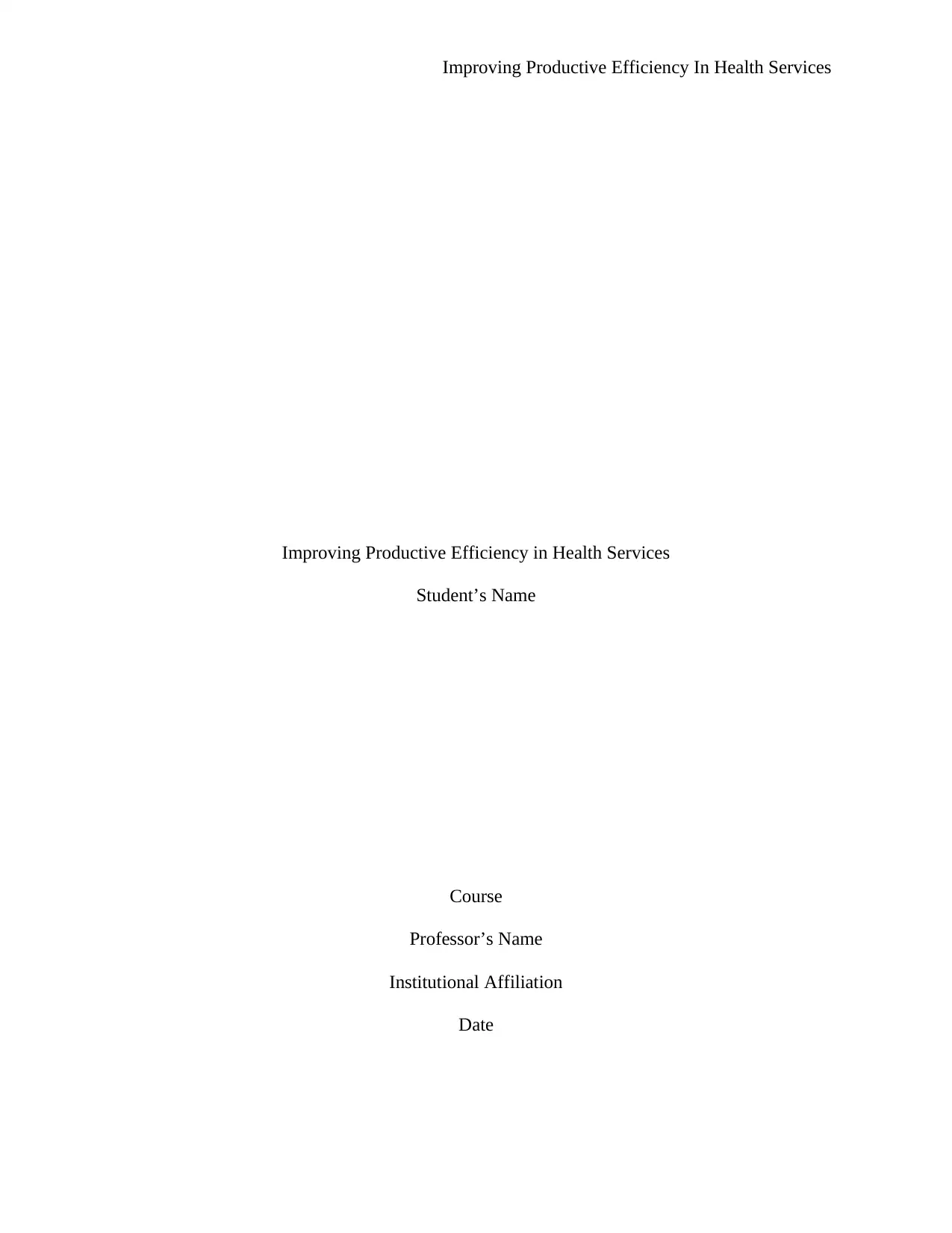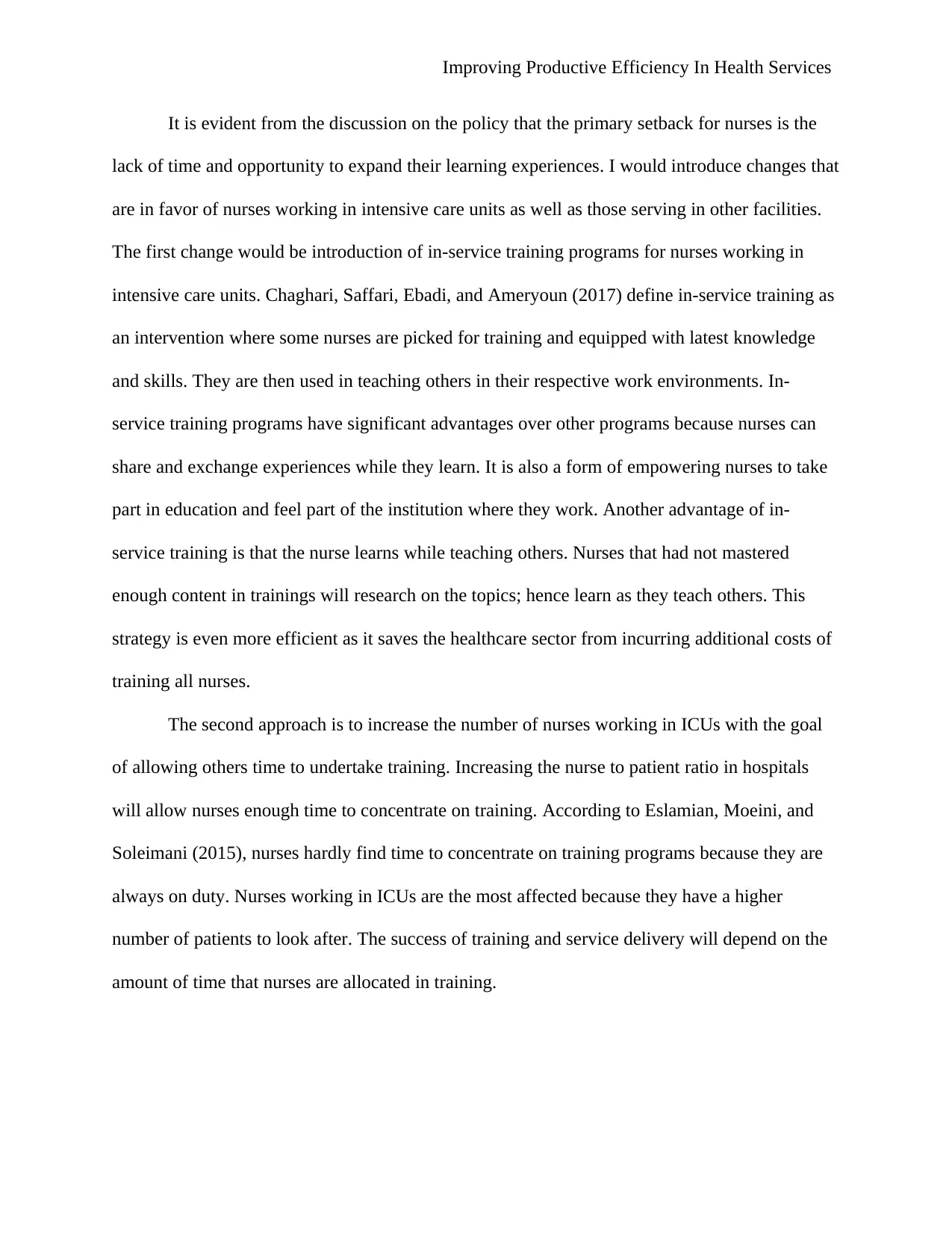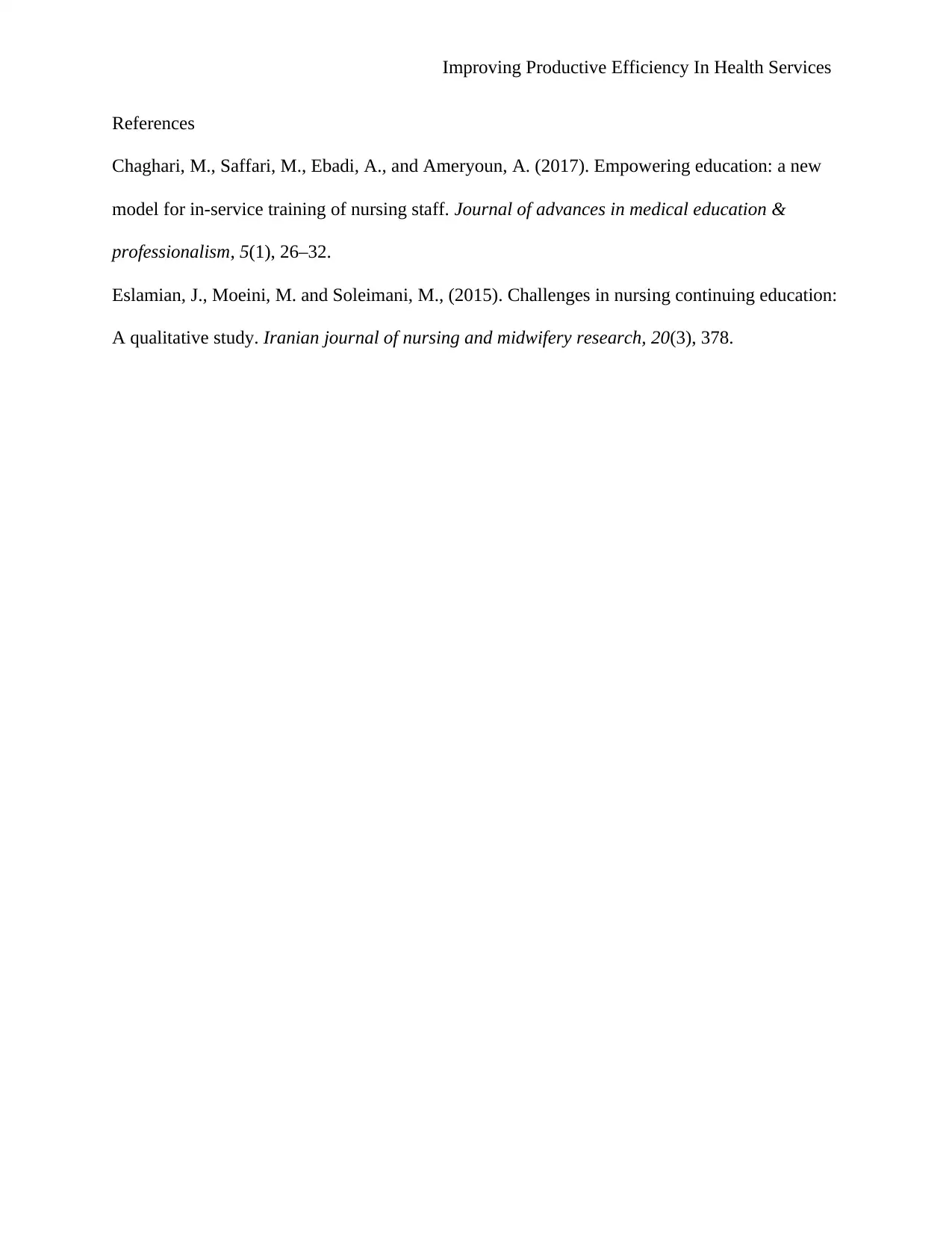Improving Productive Efficiency in Health Services: A Report
VerifiedAdded on 2023/01/19
|3
|454
|33
Report
AI Summary
This report focuses on enhancing productive efficiency within health services, specifically addressing the challenges faced by nurses. The author proposes two key strategies: the implementation of in-service training programs and an increase in the nurse-to-patient ratio, particularly in Intensive Care Units (ICUs). The in-service training model allows nurses to share knowledge and skills, promoting continuous learning and professional development. The report emphasizes the importance of allocating sufficient time for training, and the need for a better nurse-to-patient ratio, which is crucial for effective training and service delivery. The report references relevant studies to support the proposed strategies and highlights the significance of these changes in improving patient care and overall healthcare outcomes. Desklib provides this report and other educational resources for students.
1 out of 3










![[object Object]](/_next/static/media/star-bottom.7253800d.svg)